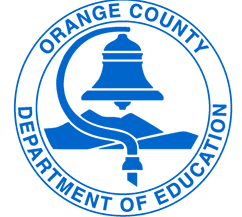Direct Instruction
 At New Vista School the primary focus is to teach the way our students learn and to leverage evidence-based interventions to overcome the issues surrounding language learning disabilities and autism.
At New Vista School the primary focus is to teach the way our students learn and to leverage evidence-based interventions to overcome the issues surrounding language learning disabilities and autism.
Our Reading and Language Arts Program helps students read for understanding. This is a critical skill that must be addressed with any child that presents with lagging comprehension skills.
Researchers at Yale University (Randi, Newman & Grigorenko, 2010) found that hyperlexics benefit from reading interventions that address the cognitive processes of comprehension. This means that we teach students how to:
- Develop a purpose and ask questions while reading
- Determine importance
- Identify cause and effect relationships
- Use sensory and emotional images
- Form predictions and make inferences
These abstract concepts are taught with visual and auditory reinforcements. We use Thinking Maps to illustrate relationships within the text and to make connections to what we are reading. Furthermore, we verbally model the thought process involved in comprehension using a research-based best practice known as the Metacognitive Think Aloud Protocol.
In addition, researchers at the Department of Interdisciplinary Learning and Teaching at the University of Texas found that Direct Instruction (DI) is an effective method for delivering cognitive-centered reading interventions to students with ASD (Flores & Ganz, 2007).
In the Reading and Language Arts Program we explicitly model comprehension as a cognitive process through a research-based best practice known as the Scaffolded Reading Experience (SRE) – a form of Direct Instruction. Learning strategies based on the SRE/ DI are incorporated in our entire curriculum.
Computer Assisted Instruction
We employ various an online programs that let our teachers engage our students in reading. This is achieved because scaffolding, peer learning, and assessment come together inside a text, exactly when students need help and motivation. These programs make it easy for teachers to collaborate and to share a digital curriculum, diagnose “the why” behind student performance, and access professional development with an immediate impact.
Comprehension is the overall goal of all reading instruction. It is best taught at the developmental or instructional level of the student. Teacher-guided use of eight cognitive comprehension strategies in combination is the most effective approach to building comprehension skills, according to the National Reading Panel. The goal is to scaffold instruction in a gradual release-of-responsibility model until the reader is able to use strategies without the assistance of the teacher (Pearson and Gallagher, 1983). The National Reading Panel concluded in its research analysis that cognitive-strategy instruction results in significant gains in reading comprehension. Reading A-Z uses the strategies necessary for reading comprehension in each lesson. See chart below:
Strategies/Methods
Mathematics Lab
The New Vista School math program seeks to develop students’ math skills to their optimum potential.
The Math Lab is overseen by a math specialist whose responsibilities include program development and instruction. Math placement is dependent upon any of the following: coursework completion, current math assessments, standardized testing and student work samples.
* ST Math™ is a cornerstone of math at New Vista School and was developed by Mind Research Institute’s Education Division. This academic, computer program is based on decades of neuroscience and education research which uses a visual approach through instructional software. The software’s unique approach of connecting students’ special temporal reasoning abilities, allows them to understand higher level math concepts. The program allows students to work at their own pace.
New Vista follows California Common Core standards.
The Math Lab utilizes the following math materials and/or programs:
- California state-approved math textbooks
ST Math™ (K-5 and Algebra Readiness)* - Singapore Math
1. Standards-based textbooks 2-5
2. Standards-based workbooks 2-5 - AGS Consumer Mathematics
- Various supplemental texts and manipulatives

